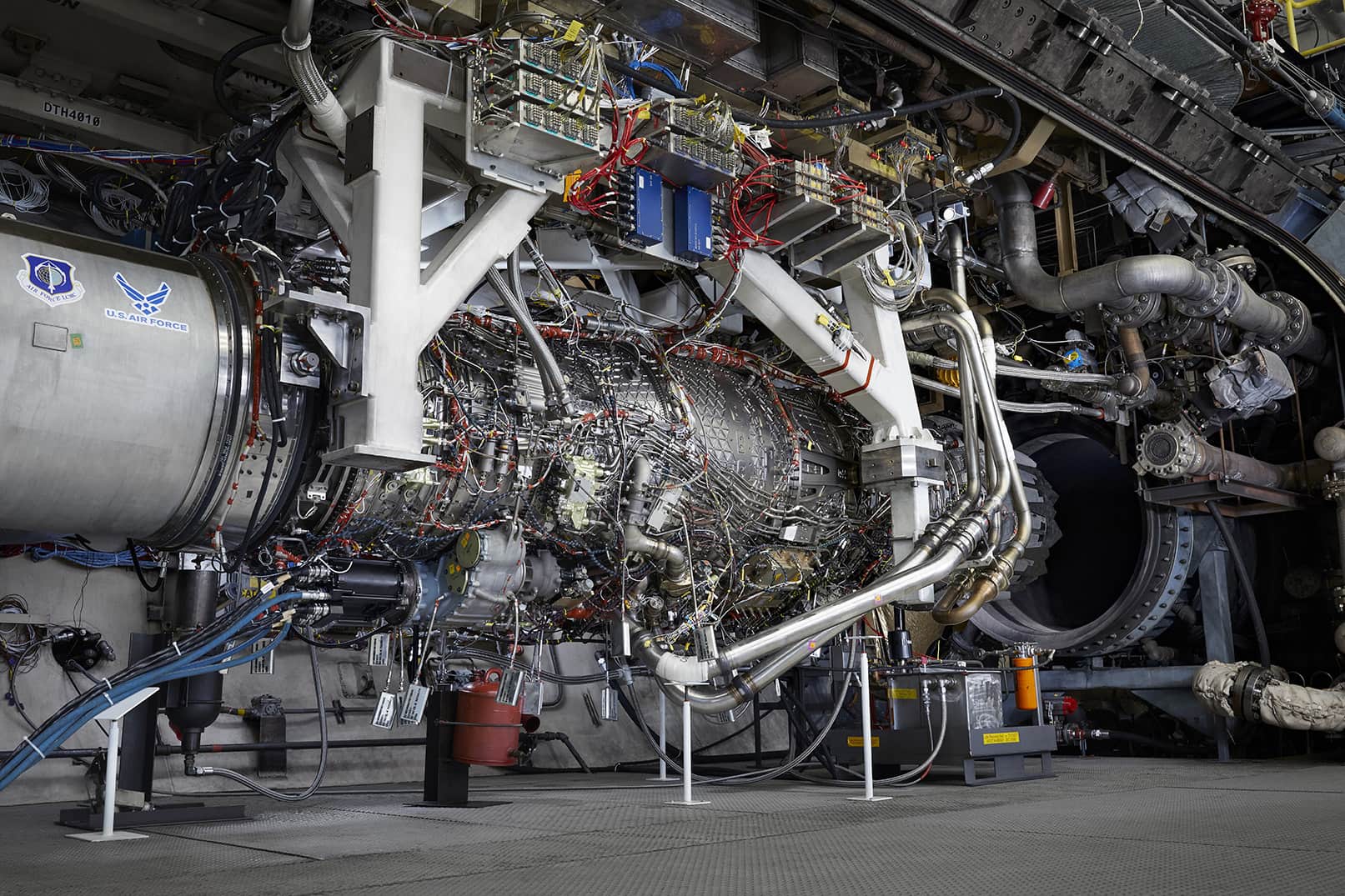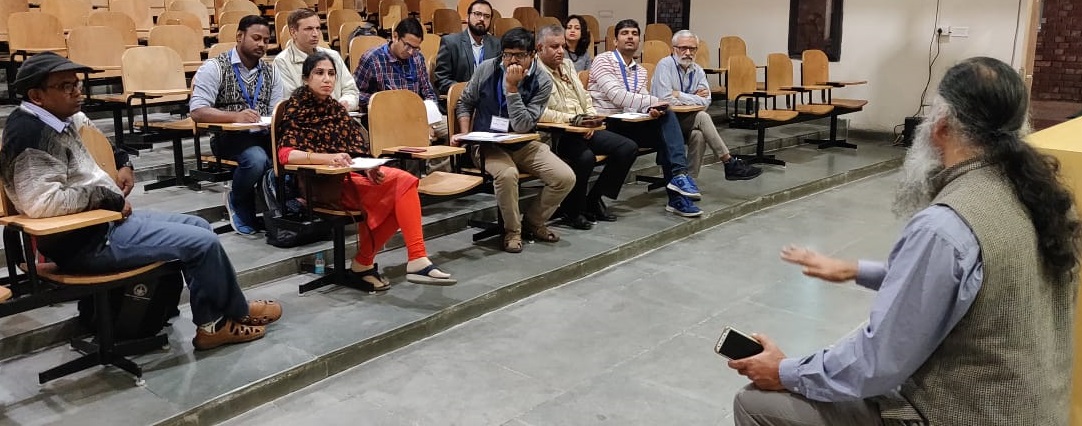Monthly Archives: January 2025
SOURCE: IDRW.ORG


At the 21st Subroto Mukerjee Seminar, Dr. Samir V Kamat, the Chairman of the Defence Research and Development Organisation (DRDO), highlighted the critical need for an increase in India’s defense research and development (R&D) budget. Speaking on the current allocation, Dr. Kamat pointed out, “We invest only 5% of our defence budget on R&D. This has to increase to 10-15% if we have to achieve all our goals. The government is sanguine about this and hopefully, in the next 5-10 years, we will transition from 5% to 15% of the defence budget on R&D.”
Dr. Kamat identified the development of aero engines as the foremost priority for India’s defense sector. He noted that the country has already made strides in this area, stating, “Today, we have demonstrated a 4th generation aero engine for our fighter aircraft. Going ahead we will need a 6th generation aero engine.” However, he underscored the significant investment required for such advancements, mentioning, “But one has to realise that if we want this capability the country will have to invest close to 4-5 billion dollars. That’s Rs 40,000-50,000 crores because we should not repeat the mistakes that we have made in the past…”
Continue readingSOURCE: IDRW.ORG


The Defence Research and Development Organisation’s (DRDO) Young Scientists’ Laboratory for Smart Materials (DYSL-SM) in Hyderabad is spearheading a pioneering project aimed at revolutionizing underwater communication for divers. The initiative focuses on developing a “Full Face Mask with underwater wireless cum wired communication system,” leveraging cutting-edge technology to enhance diver safety and operational efficiency.
The primary aim is to indigenize underwater communication systems, reducing reliance on imported technology and fostering self-reliance in India’s defense capabilities.
Continue readingSOURCE: AFI


The Brazilian Air Force (FAB), in its quest for a new type of fighter jet to complement its existing fleet, has attracted an offer from China, marking a significant development in its procurement strategy. According to the Brazilian outlet Veja, the Chinese government has proposed the sale of the Chengdu J-10C, a 4.5-generation fighter jet, to Brazil. This proposal comes as part of FAB’s broader search for a lighter fighter that would operate alongside its more advanced Gripen-E fleet.
The FAB’s selection process for a new fighter jet has drawn interest from multiple global players. Early last year, discussions were confirmed with the United States regarding the potential acquisition of a batch of F-16 fighters. The U.S. offer represents a blend of proven technology and established support systems, which could be appealing for Brazil’s strategic needs.
Continue readingSOURCE: AFI


In a strategic move to bolster its technological prowess, the Defence Research and Development Organisation (DRDO) of India is planning to dispatch its promising young scientists and engineers to prestigious foreign universities. These institutions are renowned for their complex engineering courses, particularly in the fields of aerospace and artificial intelligence (AI), aiming to accelerate the development of next-generation weapon systems and advanced communication technologies.
This initiative comes at a time when India is aggressively pushing to become self-reliant in defense technology under the ‘Aatmanirbhar Bharat’ (Self-reliant India) campaign. The DRDO recognizes that to stay ahead in modern warfare, it must not only innovate but also integrate cutting-edge technologies that are at the forefront of global research.
Continue readingSOURCE: AFI


The Chengdu J-36, a new stealth aircraft emerging from China’s cutting-edge aerospace development, has raised significant interest within the global defense community. According to aviation expert Davis, this aircraft is not designed for traditional “dogfighting” or the intense, high-maneuverability air combat that many of its counterparts excel in. Instead, the J-36 is designed to fill a specialized niche in modern warfare, offering advanced capabilities suited for long-range operations and networked combat environments.
One of the most striking features of the Chengdu J-36 is its supercruise ability. Unlike traditional fighter jets that require afterburners to achieve supersonic speeds, the J-36 is likely designed to sustain supersonic flight without the need for afterburners. This capability significantly enhances the aircraft’s range and responsiveness, making it a highly effective asset in long-endurance missions. Supercruise enables the J-36 to operate over greater distances without the fuel penalty associated with afterburner use, making it more efficient during extended operations in the contested airspace of the Indo-Pacific region.
Continue readingSOURCE: AFI


India has announced two separate missile test windows around the strategically located Andaman & Nicobar Islands, setting the stage for what is believed to be significant military exercises aimed at showcasing and advancing its missile capabilities. The notifications detail testing periods from January 15-17 and January 19-20, 2025, with designated areas where no-fly zones will be enforced to ensure safety and security during these operations.
First Test Window (January 15-17, 2025): Slightly shorter, this test area extends up to 380 kilometers, still a considerable distance for missile operations.
Continue readingSOURCE: AFI


According to recent reports from local Bangladeshi media, the Bangladesh government is engaged in discussions with Turkey to acquire 26 light tanks. These tanks, known as the TULPAR, are multi-purpose, and come from a collaborative effort between Turkish and Italian defense companies. This proposed deal signifies Bangladesh’s ongoing efforts to modernize and enhance its military capabilities.
The TULPAR light tank has been designed with versatility and adaptability in mind, making it an ideal choice for the varied terrains and conditions that characterize Bangladesh’s geography. Known for their ease of operation in soft, marshy, and rugged terrains, the TULPAR tanks are especially well-suited for the challenging landscapes found in Bangladesh’s vast wetlands and low-lying flood-prone areas.
Continue readingSOURCE: RAUNAK KUNDE / NEWS BEAT / IDRW.ORG


In a strategic move to optimize defence resources and promote Indigenous manufacturing, the Ministry of Defence (MoD) is poised to integrate the Indian Air Force (IAF) into the Indian Navy’s Twin Engine Deck Based Fighter (TEDBF) program. This decision aims to address the substantial funding and production requirements of the TEDBF project, which are comparable to those of the IAF’s Advanced Medium Combat Aircraft (AMCA) program.
The TEDBF program, designed to replace the ageing MiG-29K fleet onboard the Indian Navy’s aircraft carriers, requires significant investment. The Navy has outlined a need for approximately 145 units. However, the MoD has initially approved the procurement of 80 units. To ensure the financial viability of this project and to attract private sector involvement, it’s estimated that around 200 jets need to be produced.
Continue readingSOURCE: RAUNAK KUNDE / NEWS BEAT / IDRW.ORG


BrahMos Aerospace is in discussions with the Indian Army to develop a ground-based variant of the upcoming BrahMos-NG cruise missile. This variant would feature a booster stage and could be mounted on 8×8 Heavy Mobility Vehicles (HMVs). The lighter and more agile configuration aims to address specific operational needs, particularly in high-altitude terrains.
The IAF has already expressed strong interest in the BrahMos-NG program, particularly for its air-launched configuration. The lighter weight and smaller dimensions of the NG missile make it compatible with a wider range of aircraft, including smaller platforms like the LCA Tejas Mk1A.
Continue readingSOURCE: RAUNAK KUNDE / NEWS BEAT / IDRW.ORG

In a landmark stride towards bolstering maritime security in the Indian Ocean Region, India and the United States have unveiled plans for co-production of U.S.-designed sonobuoys, aimed at enhancing Undersea Domain Awareness (UDA) for the Indian Navy. This collaboration marks a significant advancement in the realm of high-end technology, specifically tailored for tracking submarines in the vast and deep waters of the world’s oceans.
The announcement was made as part of a comprehensive fact sheet titled ‘The U.S. and India Committed to Strengthening Strategic Technology Partnership,’ released on January 6, 2025, following the visit of U.S. National Security Advisor Jake Sullivan to India. This visit was centered around deepening defense innovation and industrial cooperation between the two nations.
Continue readingSOURCE: AFI


In a significant announcement for aviation enthusiasts and defense analysts alike, the United Aircraft Corporation (UAC) has confirmed that the Sukhoi Su-57 “Felon,” Russia’s advanced fifth-generation stealth fighter, will participate in a full-fledged flying display at Aero India 2025. This event, scheduled to take place at the Air Force Station in Yelahanka, Bengaluru from February 10th to 14th, promises to be a showcase of cutting-edge aerial technology.
The decision by UAC to bring the Su-57 for a flying display at Aero India is seen as a strategic move to strengthen ties with India, a long-standing defense partner of Russia. It comes at a time when India is actively seeking to modernize its air force with advanced fighter jets, amidst a backdrop of increasing regional security concerns.
Continue readingSOURCE: AFI


In a candid assessment of India’s indigenous Light Combat Aircraft (LCA) program, Air Chief Marshal Amar Preet Singh, the current Chief of the Air Staff, has highlighted significant delays in the production of the Tejas Mk1 jet. Speaking at a recent press conference, the Air Chief revealed that since its initial induction into the Indian Air Force (IAF) in 2016, fewer than 40 Tejas Mk1 aircraft have been inducted, pinpointing the slow pace of production as a critical bottleneck.
Air Chief Marshal Singh expressed his deep concern over the production rates, emphasizing the urgent need to address these delays to maintain the IAF’s combat readiness. He stated, “The Tejas aircraft has been with us since 2016, but the numbers we’ve seen inducted are not commensurate with our requirements. We need to do something about it.”
Continue readingSOURCE: AFI


In a significant stride towards bolstering India-US civil nuclear cooperation, the United States has announced plans to remove several Indian companies from its restricted ‘entities list.’ This move aims to dismantle decades-old barriers that have curtailed nuclear trade between the two nations.
US National Security Adviser Jake Sullivan, during his address at the Indian Institute of Technology, Delhi on Monday, confirmed that the US is in the process of finalizing steps to eliminate these long-standing regulations. “Today, I can announce that the United States is now finalizing the necessary steps to remove long-standing regulations that have prevented civil nuclear cooperation between India’s leading nuclear entities and US companies,” Sullivan stated.
Continue readingSOURCE: AFI


India’s nuclear history is one of profound transformation—from a staunch advocate for a nuclear-free world to becoming the sixth declared nuclear power in 1974. This journey, shaped by global politics, regional conflicts, and internal dynamics, offers a fascinating insight into how ideals, ambitions, and strategic imperatives intersect.
India’s initial stance on nuclear weapons was rooted in moral conviction and the horrors of the atomic bombings in Japan. Mahatma Gandhi, in 1947, decried nuclear weapons as a “sinful and evil use of science.” Shortly after, India’s first Prime Minister, Jawaharlal Nehru, voiced his concerns about nuclear weapons being used disproportionately against Asians, calling for their global abolition.
Continue readingSOURCE: IDRW.ORG


The French Navy’s nuclear-powered attack submarine, Suffren, has made its presence felt in India, accompanying the Charles de Gaulle carrier battle group on a strategic visit. This event is not just a demonstration of military cooperation between the two countries, but also an opportunity for India to explore advanced submarine technologies. France has extended an offer to India, sharing the cutting-edge Pump-jet propulsion technology used in the Suffren-class nuclear-powered attack submarines, a crucial component that could have significant implications for India’s ongoing nuclear submarine projects.
The Pump-jet propulsion system is a sophisticated alternative to traditional propeller-based propulsion systems. This technology uses a pump to draw water into the submarine and eject it through a nozzle, creating thrust. The design significantly reduces noise levels, making it more stealthy and harder to detect. As stealth is one of the most critical factors in modern naval warfare, particularly for submarines, the Pump-jet system offers a clear advantage in maintaining operational secrecy and survivability in hostile waters.
Continue reading